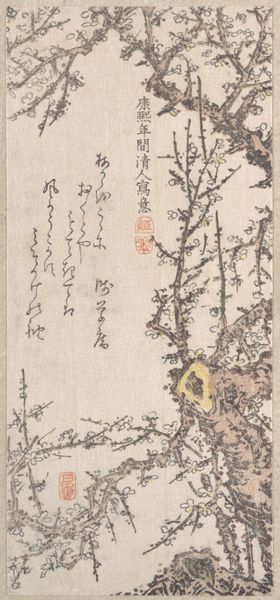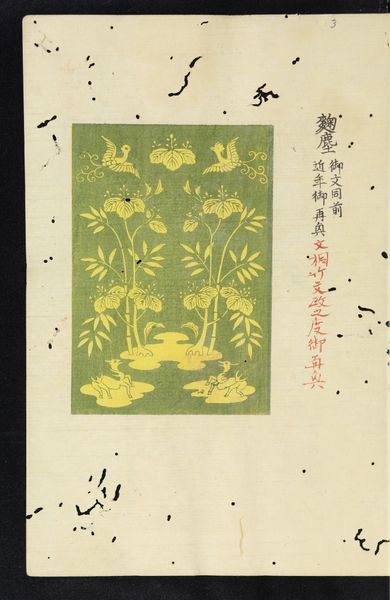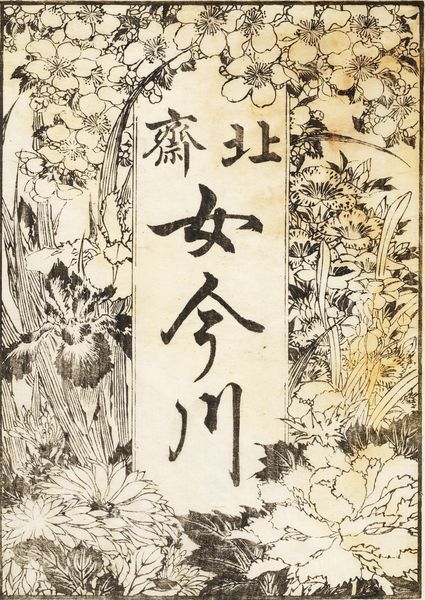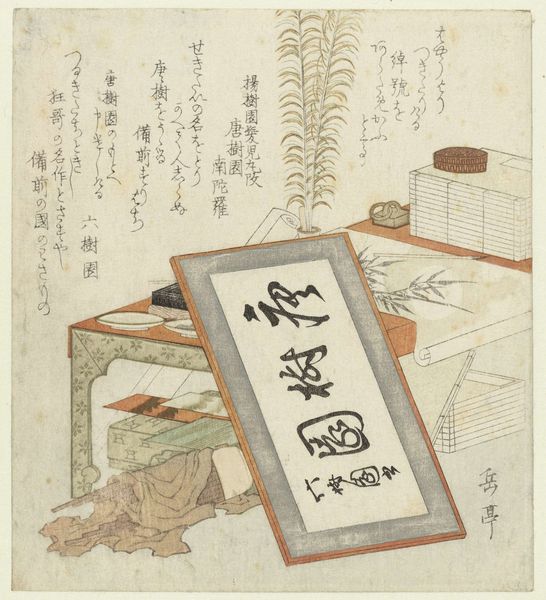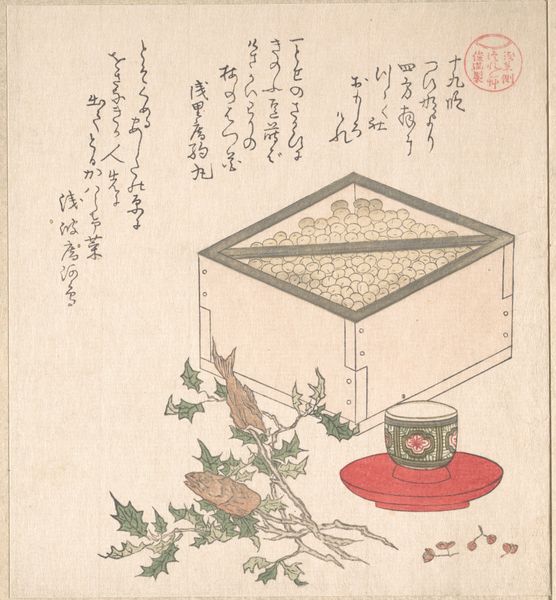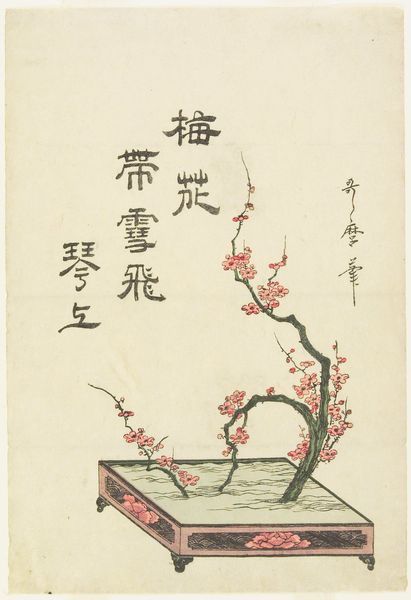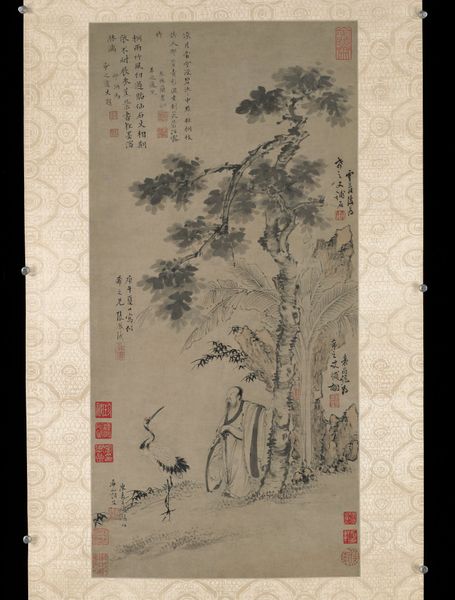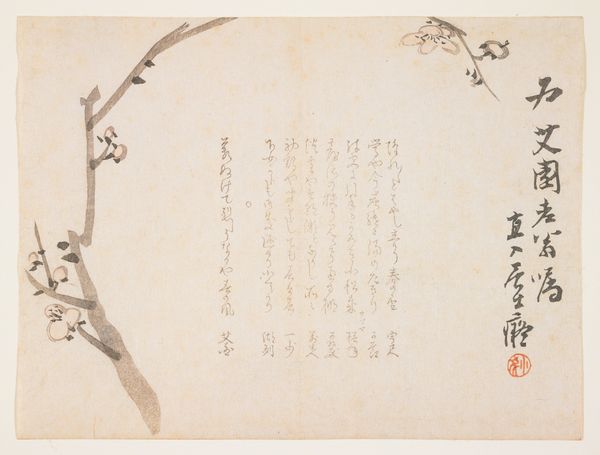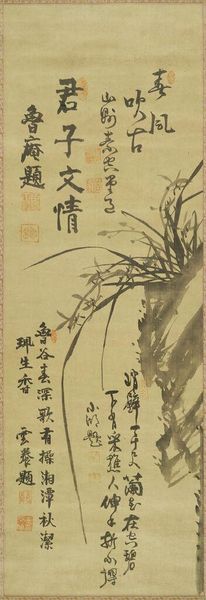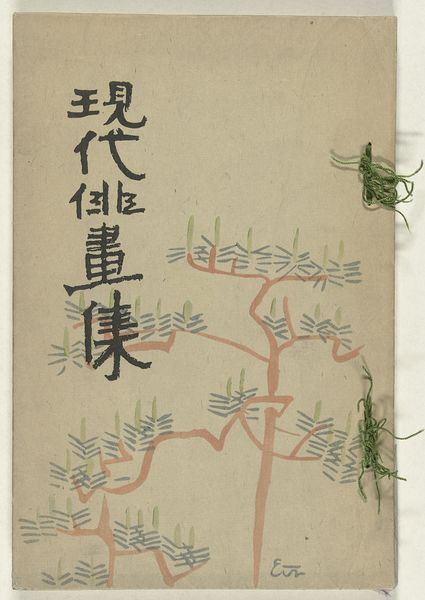
drawing, paper, watercolor
#
drawing
#
asian-art
#
paper
#
watercolor
#
geometric
#
line
#
watercolor
Dimensions: height 221 mm, width 151 mm
Copyright: Rijks Museum: Open Domain
Curator: "Mei 1913," potentially created between 1913 and 1915 by Ogawa Sen'ô. It’s a drawing made with watercolor on paper. There's a small dog, a newly planted tree, and what seems like calligraphy. The simplicity and almost naive style are really striking. What jumps out at you? Editor: I find the juxtaposition of the traditional calligraphy with what looks like a more modern, almost Western style, interesting. It feels like two different worlds colliding on a single piece of paper. How do you interpret this blend of styles in relation to the time it was created? Curator: Exactly. Japan during the Taisho era—spanning 1912-1926, when this work was created—was undergoing a period of intense westernization and modernization. Artists were grappling with incorporating foreign influences while maintaining their cultural identity. This piece feels like a visual representation of that tension. Do you see the dog and tree as purely representational, or as something more? Editor: I hadn’t really considered symbolism. The dog, perhaps representing domesticity and tradition? And the young tree, new growth and potential… possibly westernization, even? Curator: Perhaps. Think about the Meiji Restoration before this era and how Japan actively imported Western ideas to strengthen itself against colonial powers. Could the dog and the tree symbolize aspects of Japanese society and imported concepts from the West co-existing? How would the artist have experienced these rapid cultural shifts? Editor: That's fascinating! Thinking about it that way, it becomes more than just a simple drawing; it is a visual commentary on the social and cultural transformations of the era. Curator: Precisely! It’s a window into a complex period of history viewed through the eyes of someone experiencing those changes firsthand. It can also teach us a little bit about colonialism from the other point of view, of being invaded by a new culture. Editor: I hadn't considered it so deeply, but now it makes so much sense! Thank you!
Comments
No comments
Be the first to comment and join the conversation on the ultimate creative platform.

